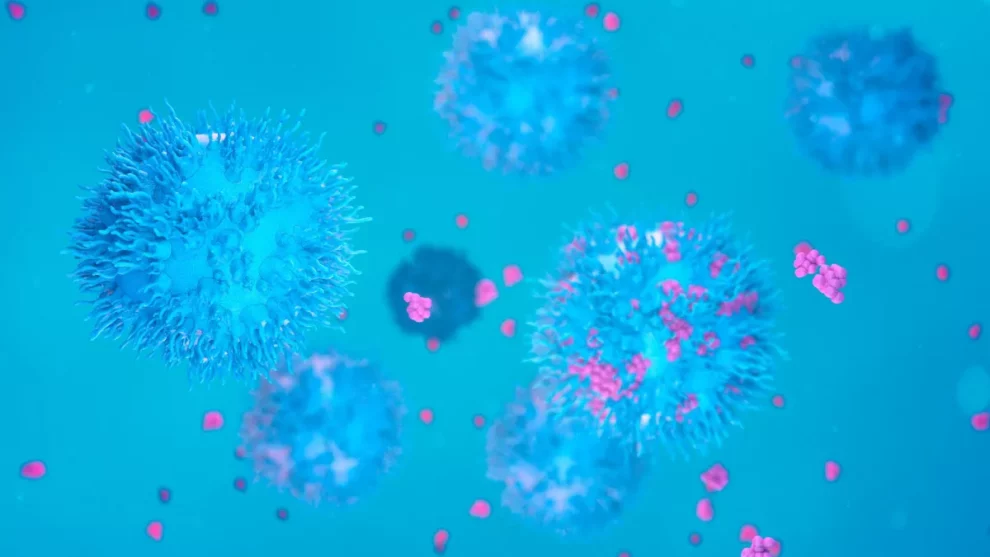Scientists have identified a promising new approach to combat some of the most aggressive forms of cancer by targeting rogue DNA fragments that fuel tumor growth and resistance to chemotherapy. This landmark discovery, emerging from a collaborative US-UK research effort, offers new hope to patients battling treatment-resistant cancers that have long challenged medical practitioners.
The research, detailed in three papers published in Nature, reveals that more than one in six cancers contain what scientists call extrachromosomal DNA (ecDNA) – circular fragments of genetic material that operate outside the normal chromosomal structure of cells. This finding has profound implications for cancer treatment, particularly for patients whose tumors have proven resistant to conventional therapies.
The comprehensive study, which analyzed 39 different tumor types from nearly 15,000 UK patients, marks a significant shift in our understanding of cancer genetics. While scientists have long known about the existence of ecDNA, it was previously dismissed as a rare and insignificant phenomenon in cancer development. The new research decisively overturns this assumption, demonstrating that these DNA fragments play a crucial role in tumor survival and treatment resistance.
“These findings represent a crucial breakthrough in our understanding of why some cancers are particularly aggressive and resistant to treatment,” explains Paul Mischel, a professor of pathology at Stanford University and key figure in the research. We’re looking at a phenomenon that affects countless patients worldwide, particularly those who face the most challenging prognoses due to their tumors’ resistance to current therapeutic approaches.

The significance of this discovery lies in the unique properties of ecDNA and its role in cancer progression. Unlike normal chromosomal DNA, which is passed down evenly when cells divide, ecDNA can be distributed unequally during cell division. This irregular distribution creates genetic diversity within tumors, making them more adaptable and resistant to treatment. Furthermore, these DNA fragments carry genes that both drive cancer growth and suppress the immune system’s natural anti-cancer responses, creating a double challenge for traditional treatments.
Perhaps most exciting is the potential therapeutic application of these findings. Researchers have identified a new class of drugs called CHK1 inhibitors that show promise in targeting cells containing ecDNA. Early trials in mice using a CHK1 inhibitor developed by Boundless Bio, a biotechnology startup, have shown encouraging results when combined with conventional cancer treatments. The drug appears to help reduce tumors and prevent the development of treatment resistance, opening a new avenue for cancer therapy.
David Scott, director of Cancer Grand Challenges at Cancer Research UK, emphasizes the potential impact of this discovery: “We’re looking at a possible game-changer in cancer treatment. Many aggressive cancers rely on ecDNA for survival, and as these cancers progress, this rogue DNA drives their resistance to treatment, leaving patients with limited options. By developing treatments that target ecDNA, we could potentially disrupt the fundamental survival mechanism of these persistent tumors, transforming what was once a dire prognosis into a manageable condition.”
The research effort, funded through Cancer Grand Challenges – a joint initiative between Cancer Research UK and the US National Cancer Institute – represents a significant step forward in the field of precision oncology. By identifying specific genetic mechanisms that drive cancer progression, researchers can develop more targeted and effective treatments.
Charles Swanton from the Francis Crick Institute in London, who served as a senior author on one of the papers, highlights the broader implications of the work: “This research fundamentally changes our understanding of cancer cell biology. These circular DNA elements play a crucial role in cancer cell fitness and their ability to evade immune system detection. The insights gained from these studies could lead to revolutionary approaches in cancer treatment, potentially improving drug sensitivity and patient outcomes.”
The discovery’s impact extends beyond immediate therapeutic applications. It provides new insights into why some cancers become resistant to treatment over time and suggests potential strategies for preventing or delaying this resistance. The presence of ecDNA in 17.1% of studied tumors, with higher prevalence in certain forms of breast, brain, and lung cancer, indicates that treatments targeting this mechanism could benefit a significant number of cancer patients.
As clinical trials progress and our understanding of ecDNA’s role in cancer continues to deepen, this research opens up new possibilities for combination therapies that could target both traditional cancer mechanisms and these newly understood DNA structures. The development of drugs specifically designed to target ecDNA represents a novel approach to cancer treatment, one that could complement existing therapies and potentially overcome current limitations in cancer care.
This breakthrough underscores the importance of continued investment in fundamental cancer research and highlights how new understanding of cancer biology can lead to innovative treatment approaches. As these findings move from laboratory to clinical application, they offer hope to patients with some of the most challenging forms of cancer, potentially marking the beginning of a new chapter in cancer treatment.
















Add Comment